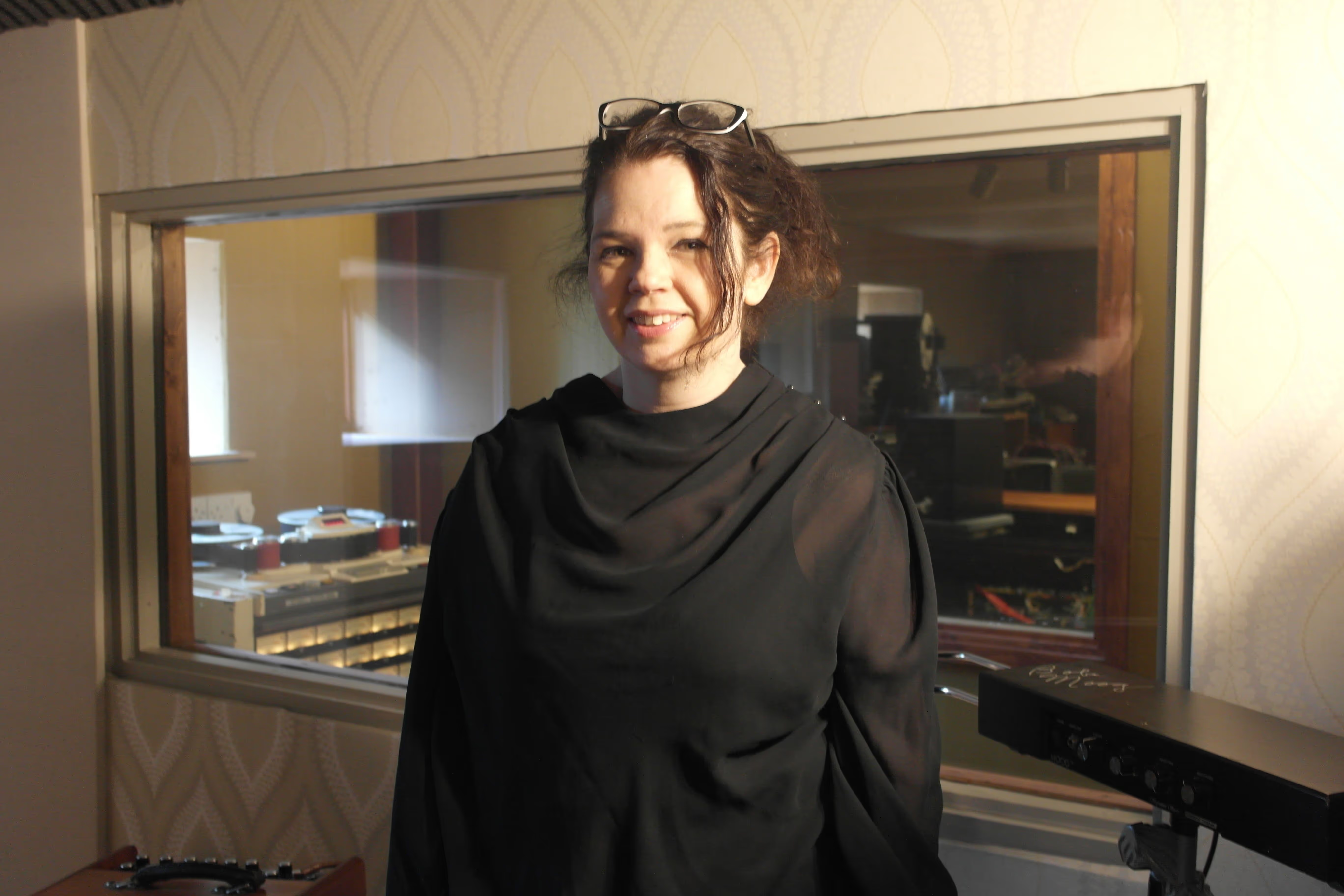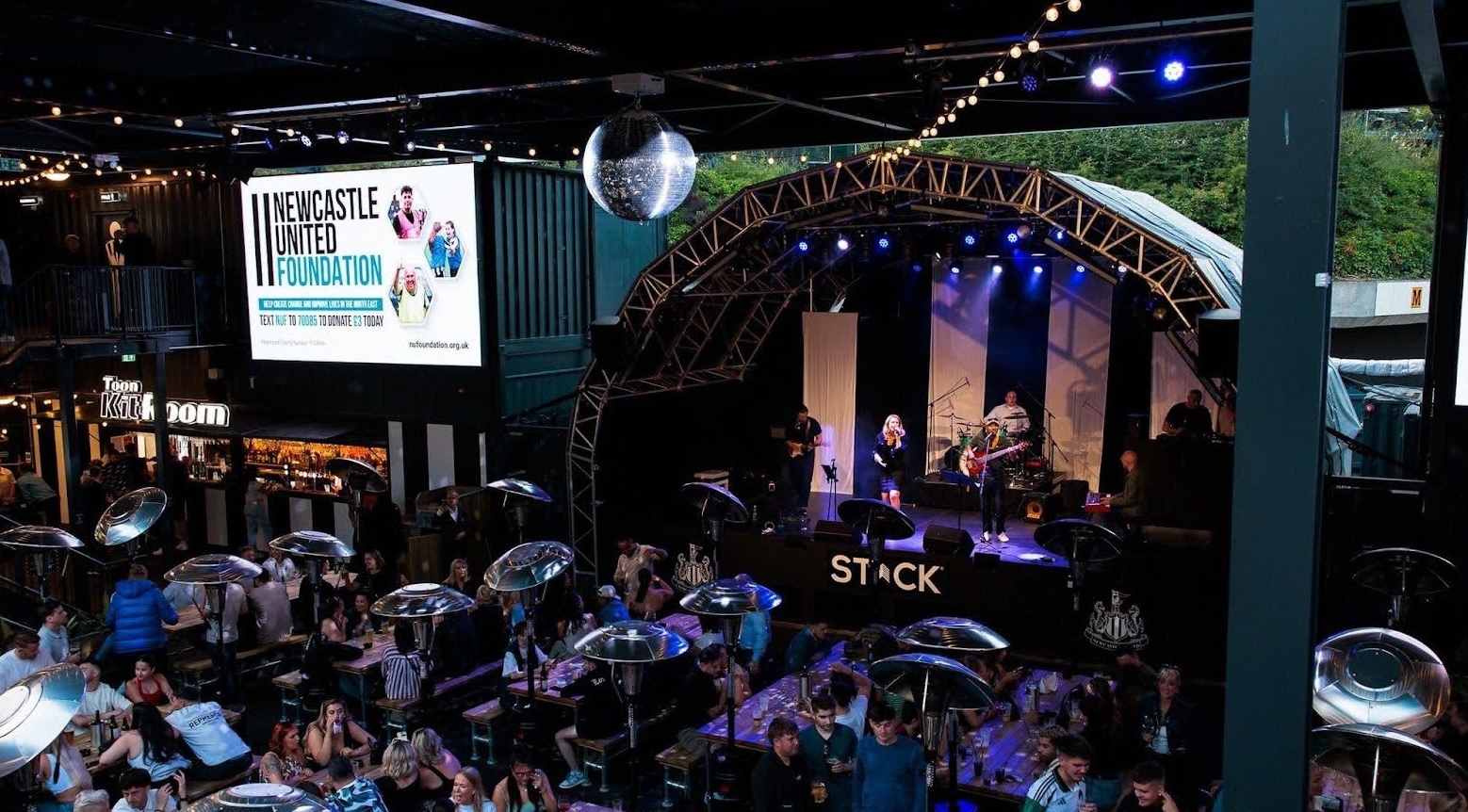
Analogue Recording – The Misunderstood Artform
Whilst digital recording may have become accepted within the modern recording studio, Julie McLarnon solely works with analogue tape, with her recording studio, Analogue Catalogue, which ensures that those distant techniques and signature analogue sounds are still championed.
It’s no secret that analogue recording declined in its usage when digital became the mainstay within recording studios in the late 90s and early 2000s.
Digital has streamlined the way tracks are recorded and mixed, so much so that now, almost anyone can use their laptop, microphone and audio interface to bolster their catalogue without needing to step foot within a recording studio.
Whilst the accessibility to create songs from scratch has overwhelming benefits, the pool of songs has become incredibly crowded, with Spotify reportedly releasing 120,000 songs a day, which, if any statistic is going to amplify the accessibility of digital recording and a saturated market, it is that.
Digital production has enabled creativity and experimentation when creating tracks, whilst making production more efficient with a more high-quality output.
But what about analogue recording?
The technique uses tapes and manual recording equipment, as opposed to computer software that is burnt off to a memory stick or downloaded as an MP3 file.
The sound of analogue is incredibly distinctive, as the sounds tend to be warmer, easier on the ears and capture a more authentic representation of the output in the studio. Whereas digital can - at times - feel too ‘digital’ (obviously), the nature of the sound is somewhat cold, overly mixed and missing that spark and charm, which is achieved from analogue.
The renaissance of vinyl has again sparked this debate between digital and analogue, as analogue upholds that vintage feel that playing vinyl is synonymous with.
It’s also beneficial when releasing vinyl, as digital recordings have to be cut back to analogue to press onto the wax, which is well worth doing now, considering that the medium outsells CDs.
But the advancements of technology can make digital have the trademark features of analogue with the right amount of work post-production.
It is just that trademark sound that Julie McLarnon, the founder of recording studio, Analogue Catalogue Studio in Northern Ireland, champions.
Julie is renowned for being one of only a handful of people in the country who still solely record to analogue.
She records on a vintage Trident Series 80B mixing console and Otari MTR90 24-track 2" tape machine, which has seen her produce and engineer albums by artists including The Vaselines, Jeffrey Lewis and Barbarossa.
By completely making her recording practices analogue, Julie can seamlessly create exciting records with the hallmarks of analogue records all so apparent in her output.
Despite the blinding positives to the listener's ears, analogue is still a misunderstood beast, which has been overshadowed by the new wave of technology.
GigPig spoke to Julie about the reason she continues to work analogue after digital has become the accepted norm, she said: “It's related to the way that my brain is wired.
“Having studied the neuroscience around it, I realised that everybody has their brains wired with different emphasis, with me, I store information through the medium of audio.
“So then when the technology flips to very visually based, I'm looking at the screen thinking ‘I don't have the capacity to make sense of my job’ - I just don't enjoy that aspect, and it doesn't make sense to me anymore.
“I was obsessed with breaking down those frequencies and how those sounds were being made, but nothing in Pro Tools appealed to me.
“Without a tape machine and without that process of the science of the signal coming through the desk, as you watch the gain structure go to tape, I had no interest in doing it. It’s that science that I’m interested in.
“With analogue, you can do it blind, you can operate an analogue recording studio blind as a bat as long as you know where everything is.
“In questioning why I couldn't happily make that switch between digital and analogue, I realised it was just because my brain is massively wired for audio and not to store visual information.
“For me, music was really easy and made an awful lot of sense, thinking of the sounds as both musical pitches and hertz came easily.
“I do think that back in the age of analogue before digital, people had very acute listening skills because you couldn't get by without it as there was no undo.
“If you got it wrong, or if you punched it in the wrong place, there was no safety net to help you out of that hole.
“So you didn't last in the industry if you didn't have some kind of talent or skills in that area.”
Julie has been working with analogue since 1989 and has garnered an impressive career since, after initially starting at Strawberry Studios in Greater Manchester, which saw her closely work with Martin Hannett and Chris Nagle after being taught her craft by legendary record producer, Bill Leader.
She moved onto Suite 16, and those early years in her career saw her work with industry heavyweights such as Happy Mondays, 808 State, New Order and A Guy Called Gerald.
Speaking about those years of experience and working with pivotal players in the industry, Julie said: “I was really lucky that there were only two courses for studio engineering in the country at that point, which was the Tonmeister in Surrey, and the one that was headed up by George Martin at Salford.
“I went straight from school to a George Martin course, to Strawberry, so I’ve never waited a table or pulled a pint or anything, so I've been ridiculously lucky in that respect.
“When I now look at what I've learned about the way we store information, I think that the people that I grew up working alongside were also audio thinkers.
“I can remember the way Chris Nagle and Graham Massey would operate, everything would be stored with their audio memory.
“There aren’t studios like Strawberry anymore, where you've got old fellas passing down information to the next generation and telling you how to do it right as they were back then.
“Sadly, that's what is missing.
“But emotionally, I would not want to set foot back in Strawberry or in Suite 16, which also has a blue plaque, it’s a shame that they couldn't keep them open as studios.”
Nowadays, the narrative has switched in the sense of how analogue and digital can combine their positives to create the best output possible, where a song will be recorded in analogue to achieve a unique sound, as well as mastered and mixed digitally for ease.
After moving her studio from Manchester to Northern Ireland piece by piece in 2015, she has continued to record albums with timeless flair.
Analogue Catalogue Studio has since begun to move into creating a hybrid studio with the introduction of digital, whilst still preserving the authentic sound of analogue, Julie added: “I have a Pro Tools studio here, I don't operate in it, but the other engineer now has eight screens in that room.
“But for me, there's eight things to look at, and I'm thinking, ‘if you're looking at eight screens, how can you listen?’ You just can't be listening if you've got that much visual stuff going on.
“So I'm trying to build a happy medium here for the current day and there are bands that come in here and either work completely to Pro Tools, or they have me record analogue and then pushed into Pro Tools in the normal way.
“I think that's the safety net that most musicians have become accustomed to.
“The fun thing of the last six months, since the Pro Tools room has been set up, is I get to go in and shout frequencies at the engineers, which they’ll listen to, change it and work out that it now sounds an awful lot clearer.
“But they haven’t trained their ears to know that, they just looking at the screen, and whatever the screen says it must be right.
“Just like I haven't trained my eyes to look at any of that, I don't know what is going on the screen, it's just pretty colours, I just hear what I can hear, and I'm able to shout instructions.
“The way that your brain processes sound, it struggles to handle loads of high-end frequencies.
“The training of recording to analogue would have you talking about signal-to-noise ratio, which the main part of the job is maintaining the gain structure to keep the signal-to-noise ratio as good as it can be, it’s something you don’t have to learn in Pro Tools.
“This means that for any of those high reflective harmonics, a tape engineer will just lose them, and they have to get rid of them as it gives you a much cleaner top end.
“So you get this sparkle, but you also don't get your ears exhausted by a load of reflection that the engineer hasn't realised shouldn't be there at the top end.
“With the high frequencies, you immediately don't want to listen again and again, because if it's got too many abrasive frequencies it makes you want to pull back as it's lacking those warm frequencies.
“You want to connect with the record, but you can't because your ear is wanting to pull away for self-protection.
“So everything is now set up against you being able to connect with an artist or a record, because 120,000 songs are being released a day, and most of those songs are so abrasive, that listening to them two or three times gives you a headache.
“I'm not saying there are not any good records out there, but there are 120,000 records released a day, and what is the percentage of them that have a standard that is well crafted and has a beautiful standard of recording?
If EQ (equalization) and techniques were better on some of the songs that came out this week, then maybe the kids will give them more of a chance, and I think when these songs do come out, and the old techniques are being reused, you do get a hit and you get people returning to it.
One of the overwhelming positives of analogue recording is the limitations and obstacles that it poses, this encourages the producer to be innovative and traverse boundaries that may occur during a session.
About this, Julie said: “With 30-odd years of operating a tape machine, I don't go over stuff I'm not supposed to go over, so there isn’t that element of mistake, but there are playing mistakes for sure.
“If there's one note or something that's out of time or not where you thought it was, you will find a way of putting a plant in front of it, you have to have that mentality.
“But often those novelty things that aren't where you expect, our brains are wired to be peak interested in that, because we're pattern finders, if everything's going as planned, you're less interested then when something crops up in an area that you thinking that was weird, that's what piques your interest and reconnects you to be able to listen again.
“I think there’s almost a propaganda around analogue, it's like you've got to be amazing and get it the first time if you don't get it the first time, then it's not worth doing.
“It’s a frightening propaganda - it’s not true.
Whilst the current landscape of a recording studio is now significantly tailored more towards digital, analogue recording shouldn’t be that misunderstood beast that is now perceived when comparing the two techniques.
This should be even more apparent as recording studios now are using both forms to significantly increase the sound on their track, as well as the listenability of the record that is being produced.

Related news


.jpg)
.jpg)

.svg)

